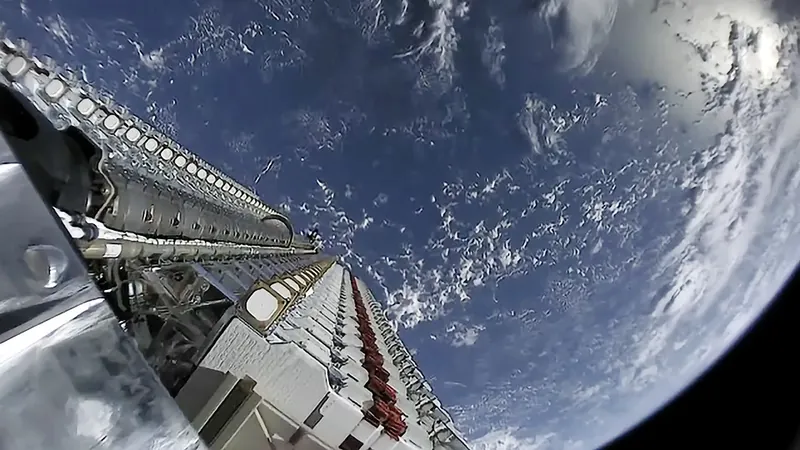
Starlink Satellites Causing Unexpected Radio Pollution: A Growing Concern for Astronomy
2025-06-10
Author: Daniel
The Unseen Clash: Satellites vs. Astronomy
A groundbreaking report from Australia’s Square Kilometer Array (SKA) has unveiled the troubling consequences of SpaceX’s Starlink satellite network on radio astronomy. Despite existing national and international regulations aimed at protecting certain radio frequency bands, Starlink appears to be flooding our skies with unwanted electromagnetic interference.
A Crowded Electromagnetic Playground
Just as light pollution obscures our view of the stars, radio pollution is suffocating important scientific observations. In the radio spectrum, bandwidths are carefully divided—some reserved for military use, others auctioned to communication firms, while vital bands for public broadcasting and scientific research fight for airspace. Governments and private entities are expected to adhere to these restrictions, ensuring that observatories can perform their work without obstacles.
In a bid to mitigate disruptions, SpaceX has collaborated with radio astronomy facilities to coordinate satellite transmissions. This includes turning off Starlink WiFi in specific regions as their satellites pass overhead.
The Menace of Unintended Emissions
While bypassing protected bands could severely hinder scientific progress, a new concern has emerged: unintended electromagnetic radiation (UEMR). Engineers from the SKA warn that this type of radiation is increasingly problematic. As the construction of the SKA—set to be the most powerful radio telescope of its kind—continues, its low-frequency segment (SKA-Low) is uniquely positioned to capture faint signals from the early universe.
However, the problem intensifies as satellite constellations proliferate. With Starlink alone boasting over 7,000 satellites, the number of potential disruptions is staggering. Recent research revealed that nearly 30% of Starlink satellites were detected interfering with the SKA-Low's observations, resulting in more than 112,000 instances of radio emissions.
Accidental versus Intentional Pollution
Most of these emissions appear unintentional. Although earlier phases of satellite launches produced emissions at lower frequencies that skewed data, those satellites are already in orbit. The current source of radio pollution remains unclear. However, one notable emission at 99.7 MHz has raised eyebrows, coinciding with FM radio broadcasts—an unwelcome intruder for observatories located in designated radio-quiet zones.
Urgent Regulatory Challenges Ahead
Addressing this dilemma is crucial for the SKA-Low telescope, which aims to unveil insights from time periods beyond the reach of previous instruments. The delicate signals from the early cosmos are easily drowned out by the ruckus of contemporary satellites.
Current regulations focus on banning intentional interference in protected bands, but UEMR remains largely unregulated. This parallels a bizarre scenario where only deliberate acts of violence are criminalized, leaving unintended harm unpunished. Spectrum management experts and regulators are grappling with how to tackle this burgeoning issue, but for now, as long as Starlink operates, so will the unintended radio emissions.





 Brasil (PT)
Brasil (PT)
 Canada (EN)
Canada (EN)
 Chile (ES)
Chile (ES)
 Česko (CS)
Česko (CS)
 대한민국 (KO)
대한민국 (KO)
 España (ES)
España (ES)
 France (FR)
France (FR)
 Hong Kong (EN)
Hong Kong (EN)
 Italia (IT)
Italia (IT)
 日本 (JA)
日本 (JA)
 Magyarország (HU)
Magyarország (HU)
 Norge (NO)
Norge (NO)
 Polska (PL)
Polska (PL)
 Schweiz (DE)
Schweiz (DE)
 Singapore (EN)
Singapore (EN)
 Sverige (SV)
Sverige (SV)
 Suomi (FI)
Suomi (FI)
 Türkiye (TR)
Türkiye (TR)
 الإمارات العربية المتحدة (AR)
الإمارات العربية المتحدة (AR)